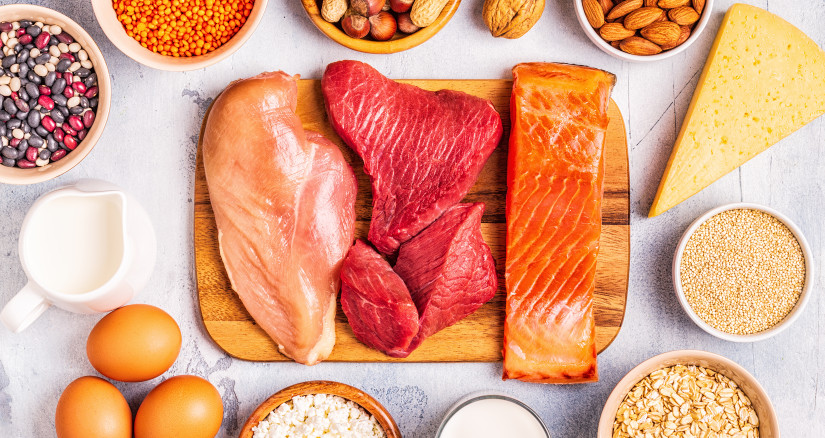
Pet Food at a Crossroads: Navigating Protein Scarcity, Cost, and Consumer Expectations
Pet ownership is surging across the globe even as human birth rates continue to fall. In many countries, pets are becoming core members of the family, sometimes even replacing traditional family structures. As pets take on a more central role in households, expectations around their care and especially their nutrition are evolving. With that shift comes rising demand for high-quality, nutritionally balanced pet food.
But here’s the catch: while the number of pets keeps rising, the global supply of animal protein is tightening. Global meat production is growing at just ~1% annually, far slower than demand. Meanwhile, environmental pressures are intensifying—livestock production accounts for nearly 15% of global emissions and is increasingly under fire for its impact on land and water use.
At the same time, ingredient costs are climbing, with feed prices remaining high due to climate volatility, supply chain issues, and inflation, according to Rabobank.
For the pet food industry, the question is clear: how do we continue delivering nutritious, appealing diets in a world where protein is both scarce and scrutinized?
What’s Driving the Pressure?
The pet food industry is feeling mounting pressure from several converging trends. As pet ownership rises—surpassing the number of children in some countries like Japan and reaching over half of U.S. households—the demand for pet food is surging. Yet, protein supply is not keeping pace. While global meat production grows at a modest 1% annually, pet food demand is increasing by 4-5% each year.
At the same time, sustainability expectations are intensifying, with livestock farming scrutinized for its land use, water consumption, and greenhouse gas emissions. Compounding these challenges are evolving regulations, including mandates for deforestation-free sourcing and methane reduction, which are placing new constraints on already strained supply chains.

Photo by biletskiy
Why It Matters
The pet food industry has long led the way in using meat by-products, like organ meats and trimmings, to create high-value nutrition while minimizing waste. This approach has supported ethical, full-use practices and kept carbon footprints low.
But the landscape is changing. Smaller herd sizes, climate-linked disruptions, and changing human dietary patterns mean these by-products are no longer as abundant or predictable as they once were.
That doesn't mean abandoning what works. It means expanding our ingredient toolbox and embracing new, responsible protein sources that support both pet health and long-term business resilience.
Where Innovation Is Headed
Leading companies are already exploring new paths forward to address protein scarcity and sustainability challenges. Insect protein sources like black soldier fly larvae and crickets are gaining attention for their high digestibility and low environmental impact.
Blended and plant-based proteins—such as peas, chickpeas, and soy—are increasingly being used in canine diets as complementary sources of nutrition. At the same time, precision fermentation and cultured protein technologies are progressing from concept to pilot scale, offering promising alternatives to traditional animal-based inputs.
To build resilience, many brands are also diversifying their sourcing strategies by partnering with alternative protein suppliers, prioritizing local ingredients, and exploring vertical integration.

Photo by AnnaStills
What Else Needs Consideration?
Several key factors shape the future of alternative proteins in pet food. First and foremost, nutritional standards must be met. Novel proteins need to align with guidelines set by organizations like AAFCO and FEDIAF, ensuring they provide essential amino acids and are digestible enough for pets to thrive.
Regulatory approval is another hurdle, as many emerging ingredients such as insect-based or fermentation-derived proteins are still navigating country-specific approval processes.
Consumer perception also plays a major role. While younger pet owners tend to embrace innovation, many still associate traditional meats like chicken and beef with quality, making education and transparency crucial for broader acceptance.
Cost presents a significant barrier, too. Most next-generation protein technologies remain expensive compared to conventional options, and scaling up will require substantial investment and infrastructure development.
Lastly, global protein markets are increasingly interconnected, with pet food producers now competing with human food, aquaculture, and even biofuel industries for limited protein inputs. This overlap, combined with geopolitical instability and shifting trade policies, directly impacts ingredient availability and pricing.
Looking Ahead
The pet food industry stands at a critical crossroads. Strategies that worked for decades are being tested by new economic, environmental, and regulatory realities. But within that disruption lies opportunity.
By embracing a more diverse, strategic ingredient approach, companies can create high-quality, forward-thinking nutrition while building resilience into their supply chains. The challenge ahead isn’t just feeding more pets; it’s feeding them smarter, more sustainably, and with a future-ready mindset.
What shifts are you seeing in sourcing and formulation? Is your team exploring novel proteins or new sourcing models? Let’s connect and trade insights.
Follow us on LinkedIn for the latest updates on all things happening here at BSM Partners.
About the Author
Beth Jarvis is the Director of Product Innovation at BSM Partners. Throughout her career, she has been responsible for delivering new products to the pet care market from ideation through all stages of development, both domestically and internationally. As a mother, Beth leads a busy life at work and at home, and juggles it all with grace.
This content is the property of BSM Partners. Reproduction or retransmission or repurposing of any portion of this content is expressly prohibited without the approval of BSM Partners and is governed by the terms and conditions explained here.